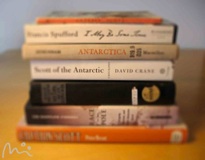TEACHING


Teaching Statement
For me, teaching is not so much about imparting knowledge as it is about providing students with the tools they can use to gather — and apply — knowledge themselves. My role is to facilitate their learning experience by designing classes that provide the opportunity to read texts they have not been exposed to or shed new light on ones they have; and to create assignments that allow them to develop a literacy that goes beyond simply reading words. To this end, I bring to the syllabi texts which stimulate different senses and require an expanded repertoire of critical analysis — including film, music, two- and three-dimensional visual media, and even food.
I tend to be an energetic presence in the classroom, encouraging discussion and asking provocative questions — but this does not mean I am lax when it comes to the discipline of presenting critical and creative thinking in print. I make sure students are able to identify reputable sources for research and to cite that work correctly. My students learn how to write essays using traditional rhetoric, and in writing classes, both classical and non-traditional forms of creative expression. I stress the importance of developing the ability to self-edit alongside such editing techniques as proofreading, copyediting and formatting.
As a practicing writer publishing across genres and platforms (in journals, newsprint, and online), I am also able to offer my students practical advice about getting their work read by a wider audience.
Teaching Experience
I taught Composition, Writing and Literature classes at the University of Pittsburgh from 1994 – 2011. My specific areas of focus were in teaching poetry and creative writing, and in introducing students to critical thinking and close reading with themed literature classes which featured a wide variety of texts. When teaching Words and Images, I was able to draw on my background in graphic design by designing comprehensive classes featuring the history and application of text design, book illustration, the graphic novel, film, and a special section on street art centered around the work of Banksy.
Particularly popular was the Introduction to Literature class I designed around food writing — food being a subject most students already have a wide knowledge of and investment in. This class featured texts that not only spoke about food, but texts written by chefs, and works in which food plays an integral role in the plot or imagery. Each class included a tasting menu consisting of a surprise ingredient related to the day’s topic that helped add another dimension to the chemistry of learning, in that the students were able to recall far more effectively the lesson when triggered by a taste memory. These menu items included: mystery candy from Hong Kong; steamed miniature potatoes; kumquats; Marmite, sour Gummi Worms, apples, Mexican Coca-Cola; chocolate cigarettes; fondant eggs; and bread dipped in white truffle oil.
I designed a tour of the Carnegie Museum of Art’s Scaife Gallery for writing and literature students which looks closely at seven specific works of art in a sequence that illustrates visually the basic principles of reading and writing that we discuss in class. Seeing these ideas represented in a completely different genre makes for a lively and stimulating learning experience.
UNIVERSITY CLASSES TAUGHT
Introduction to Literature
Reading Poetry
Short Story in Context
Words and Images
Introduction to Poetry Writing
Introduction to Creative Writing
General Writing
MIDDLE AND HIGH SCHOOL
7th Grade through 12th Grade
Boys and Girls
TEXTS TAUGHT
CARNEGIE MUSEUM LECTURE
© Micki Myers 2011
© Micki Myers 2013